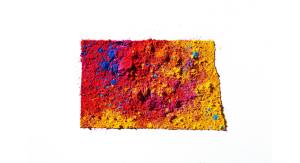Seattle’s incoming smart city coordinator will lead Array of Things work

Seattle’s technology leaders realized recently that their smart city portfolio was getting big enough to warrant full-time care.
So the city is looking for a smart city coordinator — someone the city expects to hire around late May — to lead a suite of smart city projects that now includes the Array of Things (AoT), an IoT research network that originated in Chicago. Through funding from the National Science Foundation and a partnership with the MetroLab Network and the University of Washington (UW), Seattle is the second of nine cities to receive sensor nodes for environmental monitoring through AoT.
There are a few technology officials around the country who have adopted smart city roles, but Seattle’s role is proving unique for its emphasis on civic engagement.
“Our strategy for smart cities is very much going to be a people-centric approach and we’re going to try very hard to not let the technology drive the decision-making or drive the direction of the project,” said Jim Loter, Seattle’s director of digital engagement. “That’s one of the reasons why this position is in digital engagement and not, for example, in engineering and operations.”
The smart city coordinator will report to Loter, whose office is charged with using technology to connect people with city government. In addition to managing AoT, smart city work will include several “ambitious” traffic decongestion pilots led by the Department of Transportation and an internal communications technology pilot for fire and public safety, Loter reported.
The new role is a way for the city to build more governance around smart city efforts, but it’s also a way to “demystify” smart cities for the public, collect use cases and validate programs already underway, Loter said.
City Chief Technology Officer Michael Mattmiller said it’s a “critical position” that will allow people from around the city to come together and develop a “shared vision” of what these new technologies can do.
There were supply chain problems that created delays in production of AoT nodes since the project’s launch, Mattmiller said, but the city has its first node now. The device is not yet installed — the city first needs to create goals for a broader deployment and engage the public to understand the privacy implications, all tasks to be led by the smart city coordinator.
As of March 27, Chicago has nine live sensor nodes with plans to have 500 nodes installed around the city by the end of 2018. AoT runs on Waggle, an open source IoT platform designed by Argonne National Laboratory that was made with modularity and customization in mind.
Seattle intends to take advantage of this functionality, Mattmiller said.
“One of our strong use cases in Seattle is to validate how optical rain sensors compare in terms of their accuracy and precision to the traditional rain bucket sensors that we use,” he said. “The optical sensors are much smaller, they’re much cheaper, and if they prove to be comparable, then we can greatly expand their use in the city.”






